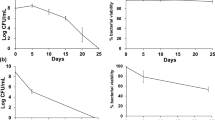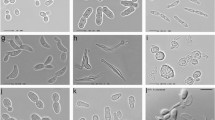Abstract
This work compares two bacterial isolates Streptomyces barkulensis RC1831 and Streptomyces chitinovorans RC1832 isolated from Chilika Lake sediments in Odisha, India, using whole-genome sequence analysis. According to the results of the genome analysis, the RC1831 genome has a chromosome with 6,383,258 bp (72.9% GC) and 6145 coding sequences and 66 RNA, while the RC1832 genome has a chromosome with 6,055,792 bp (73.1% GC) and 5824 coding sequences and 63 RNA. Further analysis of the carbohydrate active enzyme (CAZyme) revealed that RC1831 contains 78 glycoside hydrolase family genes, whereas RC1832 includes 50 glycoside hydrolases that have the potential to regulate the chitin-degrading enzymes. KAAS (KEGG Automatic Annotation Server) and AntiSMASH online tool V3.0.5 were used to identify a biosynthetic gene cluster in the isolated strain's genome. The detailed comparative analysis of the genes between the strains will help to gain better insight of chitin and other carbohydrate polymer degradation and secondary metabolite production in both the strains as well as the evolutionary relationship and possibilities of industrial application of these strains. Chitosan production might be explained by genes for the chitin breakdown pathway found in the genome sequence, but genes for later-stage conversion were not found. One significant biomolecule with a wide range of industrial uses is chitosan. Therefore, using these microbes to produce chitosan offers a viable waste disposal solution.









Similar content being viewed by others
Data Availability
The data about the strain RC1831 is publicly available at https://doi.org/10.1099/ijs.0.056614-0 and for RC1832 it is https://doi.org/10.1099/ijsem.0.001176.
References
Arndt D, Grant JR, Marcu A, Sajed T, Pon A, Liang Y, Wishart DS (2016) PHASTER: a better, faster version of the PHAST phage search tool. Nucleic Acids Res 44:W16–W21
Aziz RK, Bartels D, Best AA, DeJongh M, Disz T, Edwards RA, Formsma K, Gerdes S, Glass EM, Kubal M (2008) The RAST Server: rapid annotations using subsystems technology. BMC Genom 9:1–15
Bai Y, Eijsink VGH, Kielak AM, van Veen JA, de Boer W (2016) Genomic comparison of chitinolytic enzyme systems from terrestrial and aquatic bacteria. Environ Microbiol 18:38–49
Behera T, Himadri AM, Kumari K, Gouda SK, Das S, Ray L (2022) Exploration of genomic and functional features of chitinolytic bacterium Streptomyces chilikensis RC1830, isolated from Chilika Lake India. 3 Biotech 12:120
Bibb MJ (2005) Regulation of secondary metabolism in Streptomycetes. Curr Opin Microbiol 8:208–215
Chen J, Liu Y, Diep P, Mahadevan R (2021) Genomic analysis of a newly isolated Acidithiobacillus ferridurans JAGS strain reveals its adaptation to acid mine drainage’. Minerals 11:74
Dilip CV, Mulaje SS, Mohalkar RY (2013) A review on actinomycetes and their biotechnological application. Int J Pharm Sci Res 4:1730
Gomez-Escribano JP, Alt S, Bibb MJ (2016) Next generation sequencing of actinobacteria for the discovery of novel natural products. Mar Drugs 14:78
Kanehisa M, Goto S, Hattori M, Aoki-Kinoshita KF, Itoh M, Kawashima S, Katayama T, Araki M, Hirakawa M (2006) From genomics to chemical genomics: new developments in KEGG. Nucleic Acids Res 34:D354–D357
Khedher B, Mariem KG, Rolain J-M, Ruimy R, Croce O (2022) Application and challenge of 3rd generation sequencing for clinical bacterial studies. Int J Mol Sci 23:1395
Kieser, Tobias, Mervyn J Bibb, Mark J Buttner, Keith F Chater, and David A Hopwood. (2000). Practical Streptomyces genetics, John Innes Foundation Norwich, Norwich, England
Lombard V, Ramulu HG, Drula E, Coutinho PM, Henrissat B (2014) ’The carbohydrate-active enzymes database (CAZy) in 2013. Nucleic Acids Res 42:D490–D495
Overbeek R, Begley T, Butler RM, Choudhuri JV, Chuang H-Y, Cohoon M, de Crécy-Lagard V, Diaz N, Disz T, Edwards R (2005) The subsystems approach to genome annotation and its use in the project to annotate 1000 genomes. Nucleic Acids Res 33:5691–5702
Ray L, Mishra SR, Panda AN, Rastogi G, Pattanaik AK, Adhya TK, Suar M, Raina V (2014) Streptomyces barkulensis sp. nov., isolated from an estuarine lake. Int J Syst Evol Microbiol 64:1365–1372
Ray L, Mishra SR, Panda AN, Das S, Rastogi G, Pattanaik AK, Adhya TK, Suar M, Raina V (2016) Streptomyces chitinivorans sp. nov., a chitinolytic strain isolated from estuarine lake sediment. Int J Syst Evol Microbiol 66:3241–3248
Weber T, Blin K, Duddela S, Krug D, Kim HU, Bruccoleri R, Lee SY, Fischbach MA, Müller R, Wohlleben W, Breitling R, Takano E, Medema MH (2015) antiSMASH 3.0—a comprehensive resource for the genome mining of biosynthetic gene clusters. Nucleic Acids Res 43:W237–W243
Xu L, Zhaobin Dong Lu, Fang YL, Wei Z, Guo H, Zhang G, Gu YQ, Coleman-Derr D, Xia Q (2019) OrthoVenn2: a web server for whole-genome comparison and annotation of orthologous clusters across multiple species. Nucleic Acids Res 47:W52–W58
Author information
Authors and Affiliations
Contributions
LR, HTB, and SN: conceptualization, methodology. SN, LR, HTB, SSB, SKG: data curation, writing, original draft preparation, visualization, investigation. SN, SSB, LR: writing. LR: reviewing and editing.
Corresponding author
Ethics declarations
Conflict of interests
The research was carried out without any financial or commercial ties that could be construed as having a conflict of interest among the authors.
Supplementary Information
Below is the link to the electronic supplementary material.
Rights and permissions
Springer Nature or its licensor (e.g. a society or other partner) holds exclusive rights to this article under a publishing agreement with the author(s) or other rightsholder(s); author self-archiving of the accepted manuscript version of this article is solely governed by the terms of such publishing agreement and applicable law.
About this article
Cite this article
Nivedita, S., Behera, S.S., Behera, H.T. et al. Comparative genome-wide analysis of novel Streptomyces isolates RC1831 and RC1832: deciphering the role of functional carbohydrate (CAZy) active genes including chitinase for production of chitosan. 3 Biotech 14, 114 (2024). https://doi.org/10.1007/s13205-024-03936-5
Received:
Accepted:
Published:
DOI: https://doi.org/10.1007/s13205-024-03936-5




